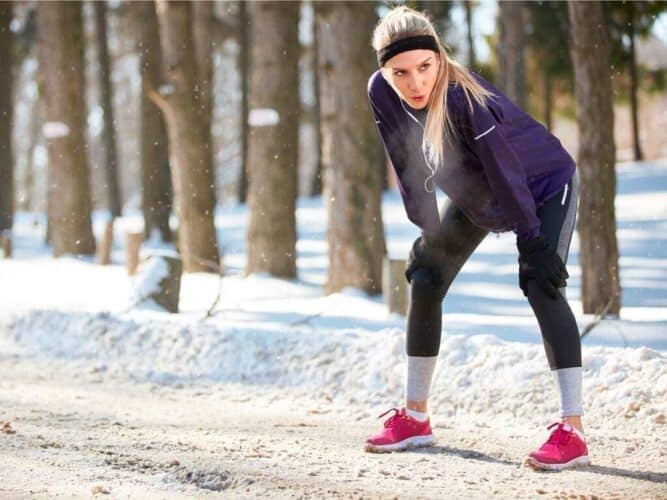
Workouts don’t have to stop when the temperatures take a dip. Outdoor sports are able to continue as usual with a few extra steps to winterize your outdoor workouts so that you can help stay protected from the colder and less desirable elements. Frigid temperatures typically discourage even the most motivated exercisers. Personal training and fitness programs must be modified to address colder climate workouts and extreme conditions. Working with a personal training professional can help take a lot of the guesswork out of how to train or what to wear in the cold for a winter workout.
Transitioning to a Winter Workout: Tips from NPTI Florida
Here are a few tips from NPTI Florida to help you transition your outdoor workouts to survive the winter weather.
Check the Forecast First
Step One: Always check the forecast before heading outside. Temperature, wind, and moisture, along with the length of time that you’ll be outside, are key factors in planning a safe cold-weather fitness routine.
Dressing Appropriately for the Cold
Layer Up: Wear appropriate base layers. Layers are crucial for a winter workout. They regulate body temperature and keep you dry. Wool or wool-blended materials should be used as your first base layer.
Avoid Overdressing: Don’t overdress. Opt for lightweight insulated vests over bulky coats for better breathability.
Don’t Forget Hats and Gloves: Cover your head and hands. Most body heat is lost through the head, so wearing a hat can help retain body heat longer. Windproof and lined gloves are essential for protecting your hands.
Stay Hydrated
Hydration is Key: Remember to stay hydrated even in cold weather. Dehydration can affect performance and stamina. Ensure your water doesn’t freeze by using insulated encasements for hydration bottles or flasks.
Recognizing the Signs
Know the Signs: Understand the signs of frostbite and hypothermia. Early warning signs include numbness, loss of feeling, or a stinging sensation for frostbite, while hypothermia symptoms include intense shivering, slurred speech, and fatigue.
Conclusion
These are just a few ideas to help winterize your outdoor workouts so that you can enjoy a winter workout while staying safe and comfortable in the cold. Contact NPTI Florida to learn more or to enroll in the best Florida personal training certification program with locations in Orlando and Tampa.

